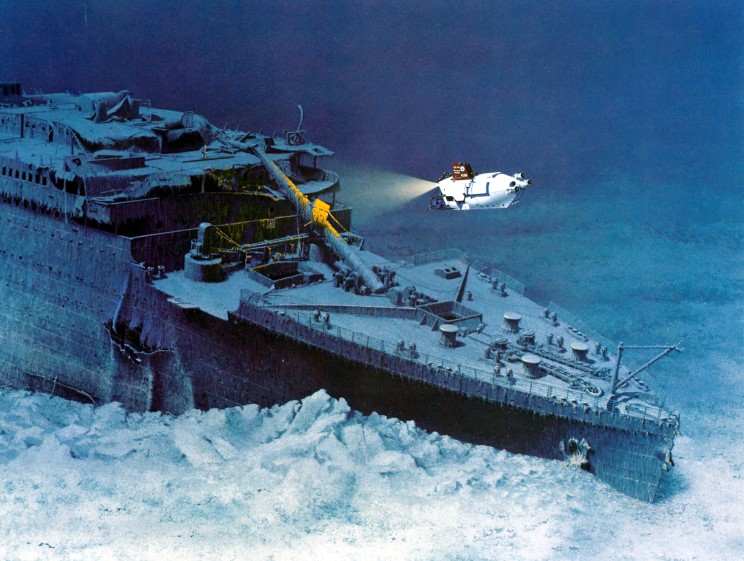Ever since the demise of the Titanic at nature's hands, researchers have taken to the discovery, exploration, and documentation of the wreckage that rests almost 3.7 kilometers below the Atlantic ocean's surface. In an effort to draw up a veritable analysis of what really occurred the night of April 14, 1912 investigators have set out on several expeditions to the scrapyard crime-scene, seeking to understand the Achilles heel that made the human being's immortal creation crumble so disproportionately quickly.

The first of these projects was led by Robert Ballard in 1985, when, after futilely scanning the ocean bed with powerful sonars, Ballard and his team decided to conduct the search using cameras mounted in an underwater vehicle codenamed Argo, which would be towed by their ship, Knorr. It was on September 1, 1985, that they spotted pieces of the Titanic's debris strewn across the ocean floor, effectively locating the cruise liner's wreckage for the first time in history. Fueled by his discovery, Ballard returned to the site throughout the next couple of years, seeking to further unearth the maritime treasure he had earlier grazed, and uncovering, to the world's bewilderment, the truth behind the Titanic's hull, which had, contrary to Senator Smith's affirmations, broken in half.

Nearly two decades later, expeditions of the wreckage returned with aims of graphically documenting the White Star liner's burial site and further understanding its end. Under the direction of cinematographer James Cameron, the Titanic's wreck site was filmed in both 2D and 3D, turning the scientific records previously alien to the public into a 2-hour documentary on the century-old maritime disaster that haunted the Atlantic, where never-before seen shots of the interiors were collected, showcasing the fantastical degree to which luxury proliferated onboard the RMS "unsinkable".

Finally, it was Dave Gallo's party, whose pioneering aim was to detailedly map the entire 15 sq. mile wreck site of Titanic in the hope of finding the missing pieces to the disaster's puzzle. To do so, they launched a pair of 2 million-dollar Automated Underwater Vehicles into the water. Through cutting-edge technologies, these AUVs were programmed to scan the site with sonars, probing for the various missing parts of the ship in 20-hour shifts, whose data feed would then be printed into a detailed map of the wreck. The crew would then be able to know where the relevant pieces to the puzzle lay, and, through the use of a remotely controlled robot tethered to the ship by miles of cable wiring its mounted state-of-the-art underwater cameras to screens onboard the ship Jean Charcot, examine and record them in HD video. The results were breath-taking: Gallo's team found 5 of the missing 50-ton boilers, samples of the ship's sturdy inch-thick steel plating larger than 60 ft., multiple funnel tops, and a low-pressure engine cylinder used to power the vessel's lighting. In addition, data collected by the expedition facilitated the scientific breakdown of the structure's long-questioned fracture, as well as passengers' belongings, literally shedding light upon this time capsule buried deep beneath the Atlantic water's surface, allowing god-knows-how-many lives to be saved in the process.
The truth is the "unsinkable" RMS Titanic was built better than she was ever credited for. If any, her only flaw was not having been built to withstand nature's wrath, which insidiously made it clear that there is no such thing its fury cannot sink.
